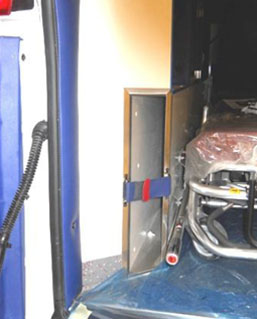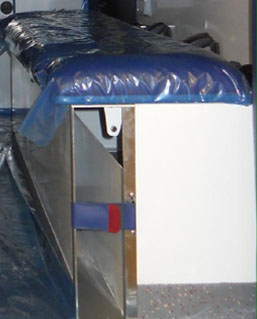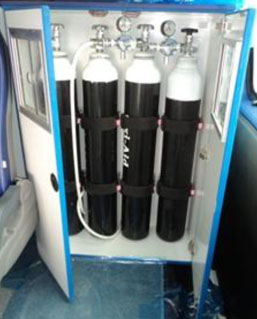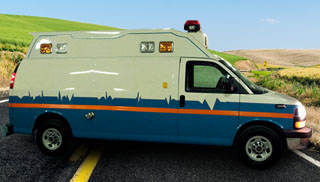
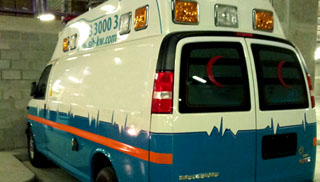
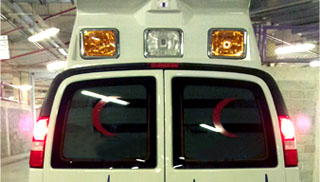
The stretcher’s location is self-evident; it goes in the stretcher mounts on the floor of the ambulance. The attendants should not place their feet on the stretcher during general driving around, as it may jeopardize the sanitary nature of the stretcher. Always make certain that the stretcher is properly latched in place and will not come loose during transit. This is especially important if there is a patient on the stretcher. The stretcher must be in lowest position in the ambulance for it to be properly secured. The adjustable leg and head ends of the stretcher should be adjusted as necessary for patient care during a call but should be left flat during general driving. If desired the head end of the stretcher may be raised one notch to provide some leg space for the attendants riding in the back.
Whenever the onboard system is used, the system should not remain charged for any longer then absolutely necessary so as to avoid damaging the system and losing oxygen through leaks, loose fittings, etc.
The devices provided for holding and securing IV fluid bags are for just that. Do not store other equipment there as it can fall down at very inopportune moments.
If Ambulance is supplied with defibrillator to ensure its continued functioning, it is important that the unit be properly used and cared for. (Refer to defibrillator manual) The unit will be tested at the start of each shift. Any deficiencies should be reported
